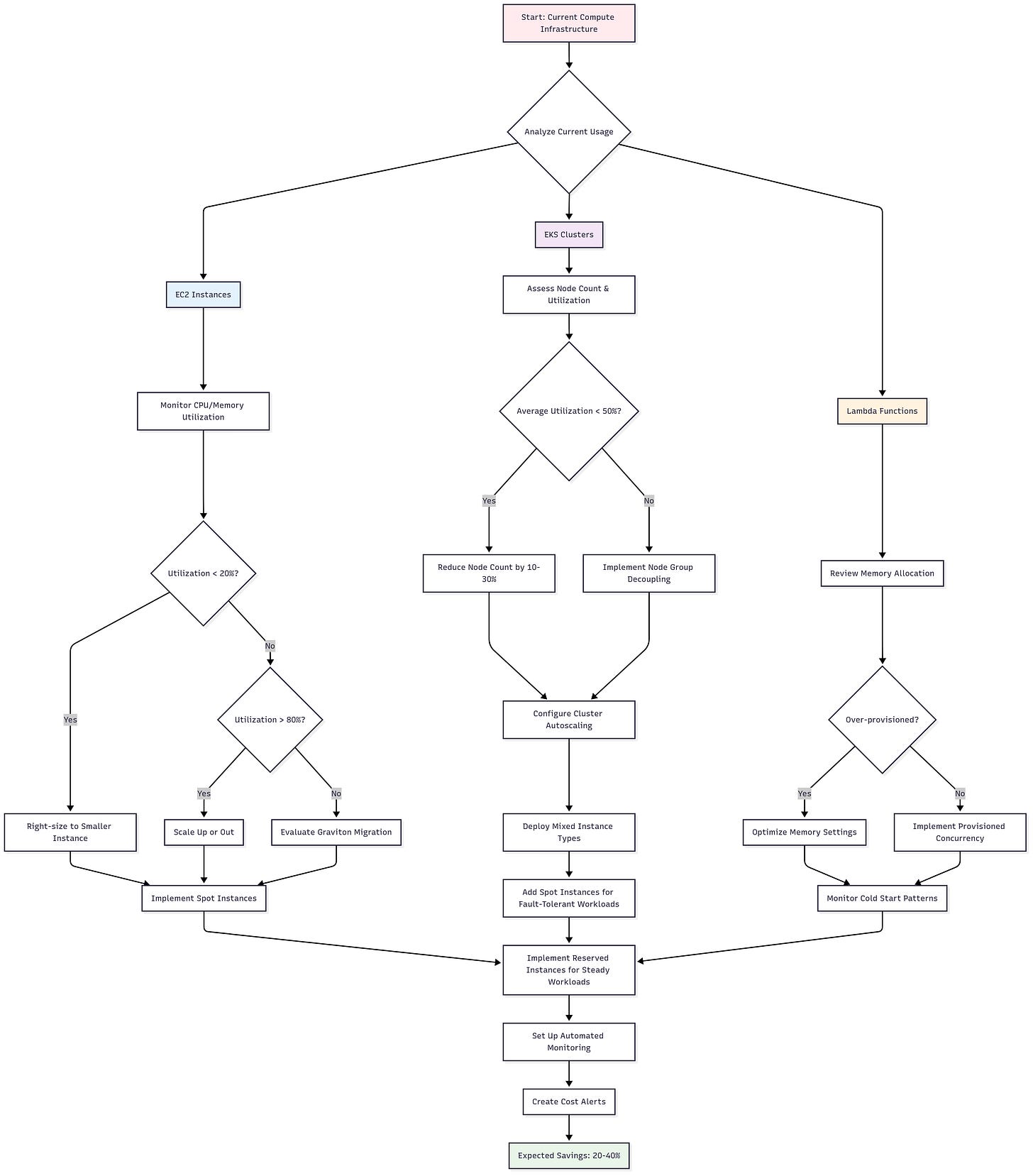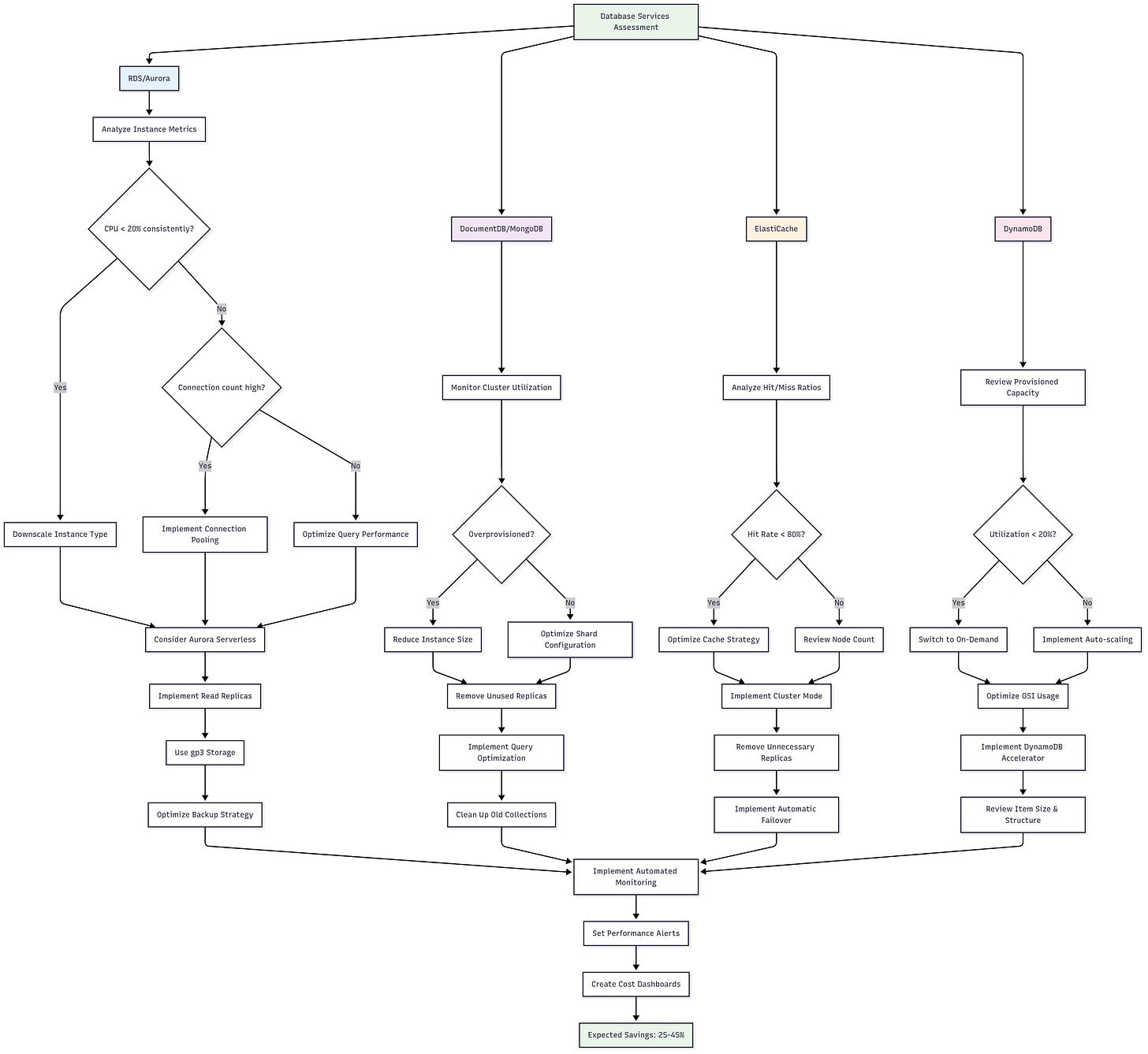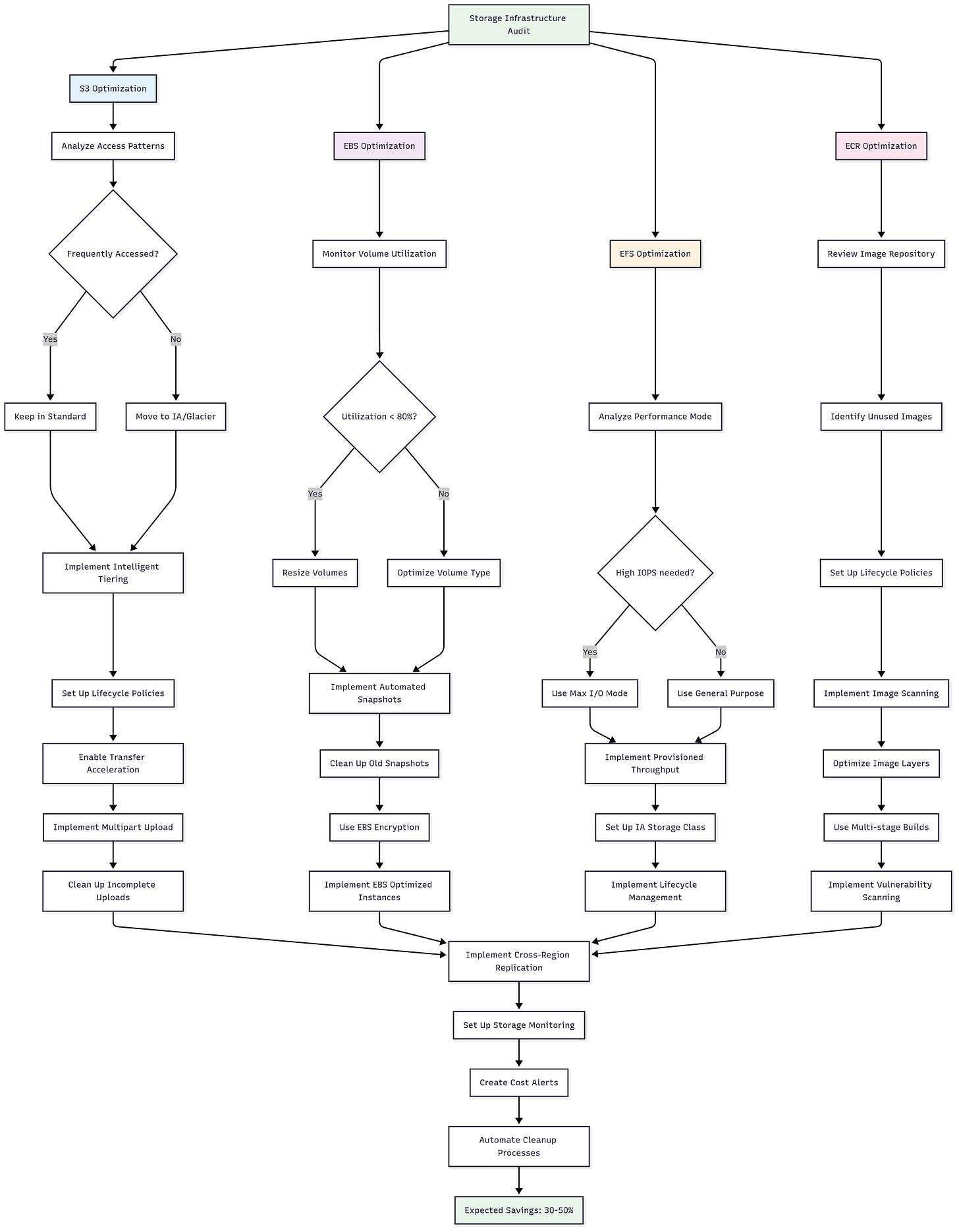The AWS Quick Wins Playbook: Cut 15-30% Off Your Cloud Bill Now
Part 2 of 4: Immediate, No-Rearchitecture Strategies to Unlock Significant AWS Savings
This is the second installment in our comprehensive AWS cost optimization series. Missed Part 1? Catch up on The $100K Wake-Up Call where we covered the detective work behind identifying your hidden cloud costs.
The Morning After: From Analysis to Action
Remember that 3 AM call from your CFO about the $200K AWS bill? You've done the detective work from Part 1. You've identified your top cost drivers using AWS Cost Explorer. The spending patterns are clear, the waste is quantified, and now you're staring at a spreadsheet full of opportunities.
The question isn't whether you can save money – it's how fast you can deliver results.
What if I told you that within the next 30 days, without touching a single line of application code or redesigning your architecture, you could reduce your AWS bill by 15-30%? Not through risky shortcuts or performance compromises, but through strategic optimization that often improves your system's performance.
This isn't theory. This is a battle-tested playbook based on proven techniques and extensive research, validated through real-world implementations across various organizations.
The Strategic Optimization Framework: Three Pillars of Immediate Impact
The beauty of this approach lies in its surgical precision. We're not doing wholesale changes – we're making intelligent adjustments that compound into massive savings. Think of it as fine-tuning a high-performance engine rather than rebuilding it from scratch.
Pillar 1: Compute Optimization – The 40% Opportunity
The Reality Check: Research shows that 60-70% of organizations are running compute resources at less than 30% utilization. That's like paying for a Ferrari and using it to commute at 25 mph in the right lane.
EKS Cluster Optimization: The "Intelligent Scaling" Strategy
The Problem: Many organizations have EKS clusters with 50+ nodes running workloads that could comfortably run on 15. Why? Because someone set up the cluster during a traffic spike and never scaled it back down.
The Solution: Smart autoscaling with mixed instance strategies.
Advanced Techniques:
Cluster Autoscaling with Node Affinity: Set up intelligent pod placement that considers both cost and performance.
Mixed Instance Types Strategy: Use a combination of current and previous generation instances. The price difference can be 20-30% with minimal performance impact.
Spot Instance Integration: For fault-tolerant workloads, spot instances can deliver 70-90% savings. The key is implementing proper graceful shutdown handling.
EC2 Right-Sizing: The Data-Driven Approach
Beyond Basic Monitoring: Don't just look at CPU averages. Examine:
99th percentile CPU utilization
Memory usage patterns during peak hours
Network I/O requirements
Storage IOPS demands
The Burstable Instance Opportunity: T3/T4g instances can be 30-40% cheaper for workloads with variable CPU demands. Perfect for web servers, small databases, and development environments.
Graviton Migration Strategy:
Start with stateless applications
Use containerized workloads for easier migration
Implement blue-green deployments for zero-downtime transitions
Expected savings: 15-40% with often better performance
Pillar 2: Database Optimization – The Hidden Goldmine
The Shocking Truth: Database costs often represent 30-40% of total cloud spend, yet they're the most neglected in optimization efforts.
DocumentDB/MongoDB Cluster Optimization
Connection Pooling Strategy: Implement connection pooling to reduce the number of active connections. This allows you to right-size instances based on actual workload rather than connection capacity.
RDS Optimization: The Multi-Layered Approach
Storage Optimization Checklist:
Migrate from gp2 to gp3 volumes (20-30% cost reduction)
Implement automated backup lifecycle management
Use RDS Proxy for connection pooling
Consider Aurora Serverless for unpredictable workloads
Advanced Techniques:
Read Replica Optimization: Place read replicas in different regions based on user geography
Multi-AZ Optimization: Only use Multi-AZ for production workloads that require high availability
Reserved Instance Strategy: Commit to RIs for stable workloads (up to 60% savings)
Pillar 3: Storage Optimization – The Compound Effect
The S3 Intelligent Tiering Revolution: This single feature can reduce storage costs by 40-60% for data with unknown access patterns.
S3 Cost Optimization Strategy
Lifecycle Management Best Practices: Implement automated policies to transition data through different storage tiers based on access patterns and age.
Advanced Storage Optimization:
S3 Storage Lens: Organization-wide visibility and automated policy enforcement
Multipart Upload Cleanup: Remove incomplete multipart uploads (hidden cost drain)
Duplicate Detection: Implement content-based deduplication
Compression Strategies: Use compression for log files and backups
Container Image Optimization:
Use multi-stage Docker builds
Implement security scanning and remove vulnerable images
Consider using AWS ECR Public Gallery for base images
Implement automated cleanup policies
Additional Best Practices: The Multiplier Effect
Network Cost Optimization
VPC Endpoint Strategy: Use VPC endpoints for S3 and DynamoDB to avoid NAT Gateway charges
CloudFront Optimization: Implement proper caching strategies and origin shield
Data Transfer Optimization: Keep data in the same region when possible
Monitoring and Alerting
Cost Anomaly Detection: Set up AWS Cost Anomaly Detection for unusual spending patterns
Budget Alerts: Implement forecasted budget alerts, not just actual spend alerts
Tag-Based Cost Allocation: Implement comprehensive tagging for cost attribution
Reserved Instance Strategy
Convertible RIs: Use convertible RIs for flexibility
Savings Plans: Consider Compute Savings Plans for broader coverage
RI Utilization Monitoring: Set up alerts for underutilized reservations
Real-World Success Stories
Case Study 1: Kubernetes Optimization for a SaaS Company
Source: Hykell
Challenge: Inefficient EKS usage leading to inflated cloud spend
Solution: Right-sized Kubernetes workloads, implemented Spot Instances, and introduced tagging and automated scaling policies
Result: Achieved 42% cost reduction on Kubernetes spend with performance improvements from better resource alignment
Case Study 2: SmartNews – Compute Optimization Using Graviton and Spot Instances
Source: AWS SmartNews Case Study
Challenge: High compute costs for latency-sensitive workloads
Solution: Migrated EC2 workloads to Graviton2 processors, adopted Spot Instances, and optimized resource configuration
Result: Achieved over 60% cost savings on compute while reducing latency by up to 68%
The Measurement Framework: Tracking Your Success
Key Metrics to Monitor
Cost per service: Track individual service cost trends
Utilization rates: Monitor CPU, memory, and storage utilization
Performance metrics: Ensure optimizations don't impact user experience
Savings attribution: Track savings by optimization category
Monthly Review Process
Review cost trends and identify new optimization opportunities
Assess the impact of implemented changes
Plan next month's optimization initiatives
Share results with stakeholders
What's Coming Next
In Part 3 of our series, we'll dive into Advanced Optimization Techniques, covering:
Network cost reduction strategies
Serverless fine-tuning and optimization
Advanced monitoring and FinOps culture implementation
Multi-account cost management strategies
The techniques covered in this playbook are your foundation. They're proven, they're safe, and they deliver results quickly. But they're just the beginning.
Your Next Steps
Start with the biggest impact: Begin with your highest-cost services identified in Part 1
Implement gradually: Don't try to do everything at once
Measure everything: Track your savings and performance metrics
Document your wins: Build a business case for further optimization investments
Question for the community: Which of these optimization strategies have you implemented? What were your results? Share your experiences in the comments below – I read every one and often feature successful implementations in future articles.
Have you implemented any of these quick wins? What challenges did you face? Share your experiences in the comments below. Your story might be featured in Part 3 of our series!
Connect with me:
#CloudOptimization #AWS #FinOps #CostSavings #DevOps #CTO #TechLeadership #AWSOptimization #CloudCosts #EC2 #EKS #RDS #S3 #Kubernetes #CloudArchitecture









